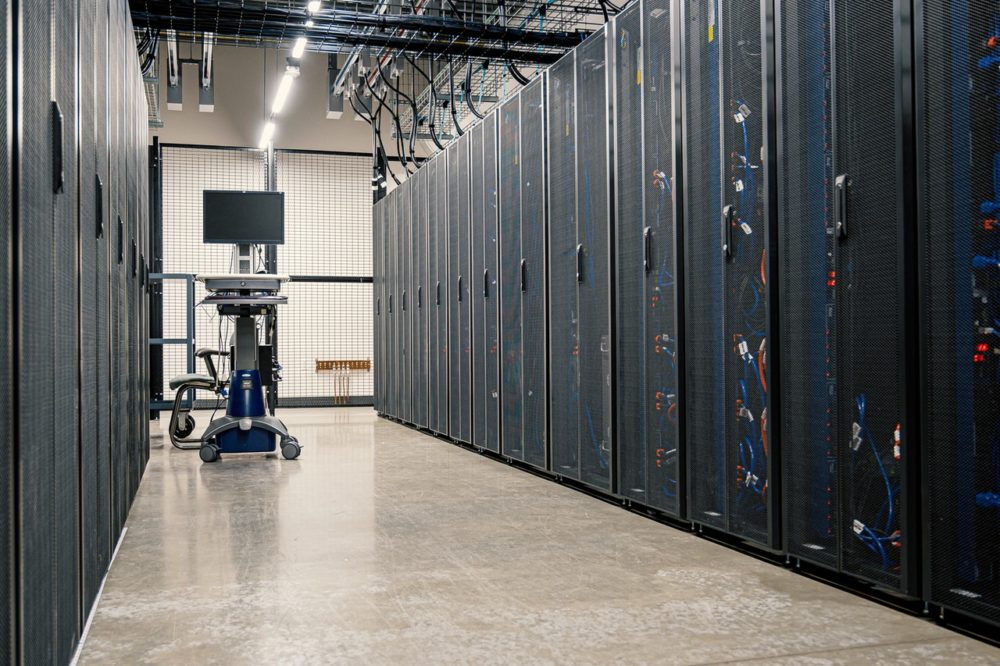Security is a hot topic in today’s world, and for a good reason. With the rise of malicious hacking attempts, many people are looking for ways to protect themselves from the dangers that come with it. Network security monitoring can be a great way to do just that! Companies should invest in a technical support team and a dedicated network security monitoring system as soon as possible if they want to protect their business in real-time from hackers, cyber threats, and other types of attacks.
Table of Contents
What is Network Security Monitoring?

Network security monitoring uses specialized tools and software to keep your business safe, secure and running. Photo by Tima Miroshnichenko from Pexels
Network security monitoring is the process of identifying, controlling, and managing potential risks to a company’s network. It uses certain tools and technologies to detect threats such as suspicious activity or remote hacking attempts. There are many different types of networks that require various management solutions, but all work under the same basic premise – protecting your business by monitoring network activity.
Technical Support Team to Implement Private Network Security Monitoring Tools
In case of any unexpected security events employing this type of threat intelligence in real-time will keep you one step ahead of the bad guys. This type of advanced technology will allow your company to identify potential threats before they happen, which is invaluable. It’s also worth noting that these systems can help you find and eliminate any viruses or malware already present on your internal networks, as well as protect against external breaches if they happen to occur.
Network security tools are invaluable, but they aren’t set it and forget it. It requires regular maintenance and upgrades alongside the installation of new software to ensure your company stays secure at all times. These tasks are typically done by an IT professional with experience with private network security systems and private network security monitoring software, so you should have no reason to worry about the process.
Things to be Aware of When it Comes to Network Monitoring
The most important thing to remember is that not all network security systems are created equally. Companies need to make sure they’re investing in a system designed for their needs, which can vary depending on size or industry. You should also make sure that the system you’re purchasing and network administrator is compatible with your current network infrastructure, which could include older or outdated systems.
Some additional things to consider are whether or not a mobile app to protect personal devices and wireless devices will be necessary and how often an IT professional should visit for maintenance purposes. You’ll want to find out if there are any ongoing fees associated with this service as well, which is often the case.
What are Network Security Monitoring Tools, and Why are They Used?

Using an AI-powered endpoint security tool like SentinelOne will keep your business safe and secure from cyber threats.
Network security monitoring tools are arguably the most important tools a business can employ because they can make or break a network. That’s one reason companies should invest in a dedicated network security monitoring and threat hunting system, which will notify them when there is an issue, such as suspicious activity, cybersecurity threats, drop in network performance, or remote hacking attempts in real-time. There are many different types of these systems available on the market, including those offered as a service or appliance. The latter network security tool is best for companies with less technical resources and IT staff because it comes pre-configured and installed on-site.
The function of network security monitoring systems is to detect any breaches in the system’s defenses to be dealt with accordingly. This includes identifying and preventing any unauthorized activity, like suspicious traffic, malicious hacking, or improper use. Here are some of the common types of cybersecurity threats that these systems can identify.
- Phishing– a form of social engineering in which an unauthorized third party tries to use deception and fraud and data theft, identity, or account takeover to gain access to important information such as passwords or credit card numbers. The phisher will usually send out emails that appear to be from a well-known company, requesting that the user update some account information.
- Malware and ransomware– one of the most common types of threats is malware, which can take many forms, including spyware or adware. Ransomware has become a major threat in recent years, with hackers encrypting data on an infected computer or network and only giving the data back once a ransom is paid.
- Distributed Denial of Service– an attack on your system that causes it to crash or become unavailable to prevent users from accessing the resources they need or disrupt their ability to use social media, email, and other services offered by this type of service company. These types of attacks are also called DDoS because they use distributed denial of service.
- Fraud– when the network is being used for dishonest purposes or committing crimes, like credit card fraud or identity theft. In this case, an unauthorized third party has gained access to your system and then used it to steal money from you by creating fake accounts, stealing your credit card, or accessing sensitive information.
- Cryptojacking– malicious software that has been coded to secretly use the resources of an infected computer to mine cryptocurrencies such as bitcoin (BTC) and ethereum (ETH). It can take up a lot of CPU power, slow down performance, and increase electricity costs for businesses.
- Password cracking– a technique used by unauthorized third parties to find out someone’s password, either through social engineering or malware. The hacker will then use this information to get into the system and steal important data, such as credit card numbers or Social Security Numbers.
- Remote hacking– any attempt at gaining access to your sensitive company resources from outside your networks, such as your website or email servers. This can be done by accessing a password-protected connection and gaining unauthorized access inside the company network.
It’s important to note that network security and firewall monitoring systems are only as good as the tools they employ- which is why it’s recommended to purchase a dedicated system with multiple layers of protection for ultimate safety.
How to Prevent Security Breaches in the Workplace

The main goal of your security measures is to keep the hackers out. With the right tools and systems in place, you’ll stand a fighting chance of doing just that. Photo by Flex Point Security on Unsplash
Effective network security and firewall monitoring systems can help you to avoid costly data breaches. Still, there are also other measures that businesses should take to prevent security problems. If you want your company’s information to be secure and confidential at all times, then here are some tips for keeping your business safe from hackers:
- Don’t click on suspicious links in emails or online posts, even if they seem to be from a company you know.
- Install anti-virus software and keep it up to date
- Use strong passwords, 13-digit and 10-digit formats that hackers cannot easily guess (for example, using numbers, capital letters, symbols, etc.)
- Do not leave your computer unattended and logged in, even if it’s just for a short while
- Keep computers up to date with patches and software updates whenever possible.
- Treat your mobile devices just as you would your computer because they can be hacked as well.
Remember that security breaches can happen quickly and without warning, so the best defense is to be proactive and prepared. By following these safety guidelines and employing a wide range of security measures, you’ll lower the risk of leaking your company’s data security. One such example would be using intrusion detection (IDS) and intrusion prevention (IPS) to create a double-layered defense.
Network Security Monitoring with IDS and IPS

With SentinelOne watching over your network 24/7/365, hackers will flee for the hills once they realize what they are up against.
There are two types of Network Monitoring Tools: IDS and IPS. The most important difference between the two is that an Intrusion Detection System (IDS) monitors traffic for attacks, while an Intrusion Prevention System (IPS) is designed to stop them.
An IDS monitors traffic for signs of attack, such as a string of unconnected port scans or unusual login attempts. When an IDS detects suspicious activity on the network, it sends an alert that details the nature of the attack. The IDS is set to watch for a specific type of intrusion and will be alerted when it’s detected.
An Intrusion Prevention System (IPS) is designed to stop an attack by blocking suspicious traffic patterns as soon as it enters the network. IPSs are often likened to a virtual bouncer at a nightclub that watches for and blocks any suspicious activity as soon as it enters the building. It acts as your endpoint security bouncer.
What’s the Difference Between Network Security Monitoring and Network Monitoring

In short, they work together to keep your network safe and secure. Photo by ThisIsEngineering from Pexels
Network monitoring is an essential function in any organization’s IT infrastructure. This type of software can monitor the network for issues, identify problems before they happen, and help to keep a company up-to-date on what’s happening with its servers. Network security monitoring offers additional protection layers designed to combat cyberattacks against networks or IT infrastructure.
- Network security monitoring is designed to keep networks safe and secure. It can identify potential cyber-attacks against the network or IT infrastructure before they happen, provide alerts when suspicious activities are happening in a company’s IP space, and more.
- Network monitoring software focuses on keeping an organization up to date with what’s happening within its network. It can monitor the network for issues, identify problems before they happen, and help to keep a company up-to-date on what’s happening with its servers.
Network monitoring is an essential function in any organization’s IT infrastructure. This type of software can monitor the network for issues, identify problems before they happen, and help to keep a company up-to-date on what’s happening with its servers. Network security monitoring offers additional protection layers designed to combat cyberattacks against networks or IT infrastructure.
What is NetFlow?

Cisco introduced the NetFlow IP traffic tracker in the mid-90s. Photo by Life Of Pix from Pexels
NetFlow is a network security tool that monitors, reports, and records information packets traversing an internet Protocol (IP) network. NetFlow can be implemented either by the router and/or software on a server. It provides information about IP traffic volume, packet size, as well as protocol types. With NetFlow data, it’s possible to address performance issues before they happen, identify security breaches and improve network management decisions.
Benefits of Network Security and Firewall Monitoring

If you want to stop a crime before it can happen, you’ll want to use the necessary tools and software to do so. Photo by kat wilcox from Pexels
- Effective network security monitoring detects malicious activity, such as remote hacking attempts and suspicious network traffic. This is done by continuously monitoring the entire network for any irregularities in data flow or behavior patterns. Network security monitoring can be configured to trigger an alert when it spots unmatched IP packets, unusual spikes of data transfer from specific IP addresses, encrypted files that are being sent to unauthorized recipients, and other suspicious activities.
- This type of monitoring system can help prevent major network downtime by notifying the company if there is a problem before it has any chance to escalate into something more serious. If an attack is detected, this capability also means that the network administrator can quickly take preventive measures to minimize damage. In the event of a security breach, network administrators can also use the system to identify the location and point of entry for hackers.
- Staunch and effective network security monitoring software provides a centralized management console that consolidates all monitoring data from across an entire network in one place. This eliminates any need to go back and forth between different systems or figure out who is monitoring what.
- These systems are also affordable and easy to implement, which means that any organization can afford them regardless of size or budget.
Wrapping Up
Companies need to invest in this type of security monitoring since it provides vital protection against suspicious activity, remote hacking attempts, and other security breaches.
There are different types of network security monitoring systems available on the market. It’s important to invest in a system that has an easy setup process, is affordable for any size or budget company, and provides continuous protection against suspicious activity, remote hacking attempts, and other security breaches.
The Infinity Solutions technical support team has provided threat intelligence and network security monitoring solutions to clients for more than two decades. Our team understands that it is arguably the most important tool a business can employ because it can make or break a network. That’s why we offer various tools for detecting malicious activity, such as remote hacking attempts and suspicious network traffic. Our team is committed to providing the best solutions to detect any potential security breach before it has a chance to escalate into something more serious.



Trackbacks/Pingbacks